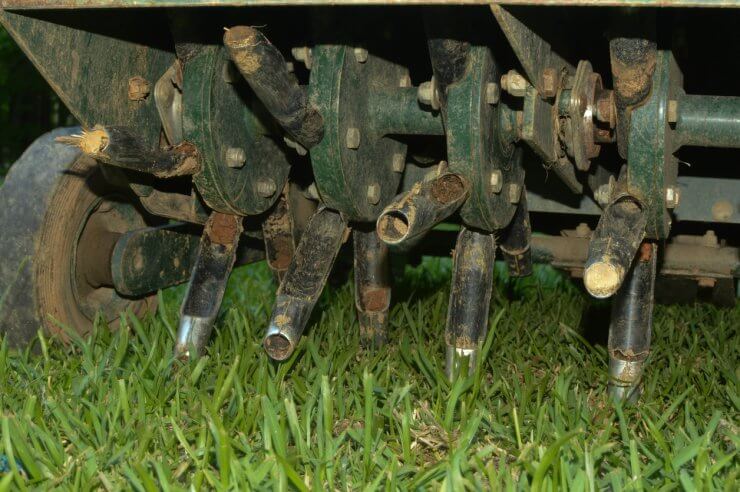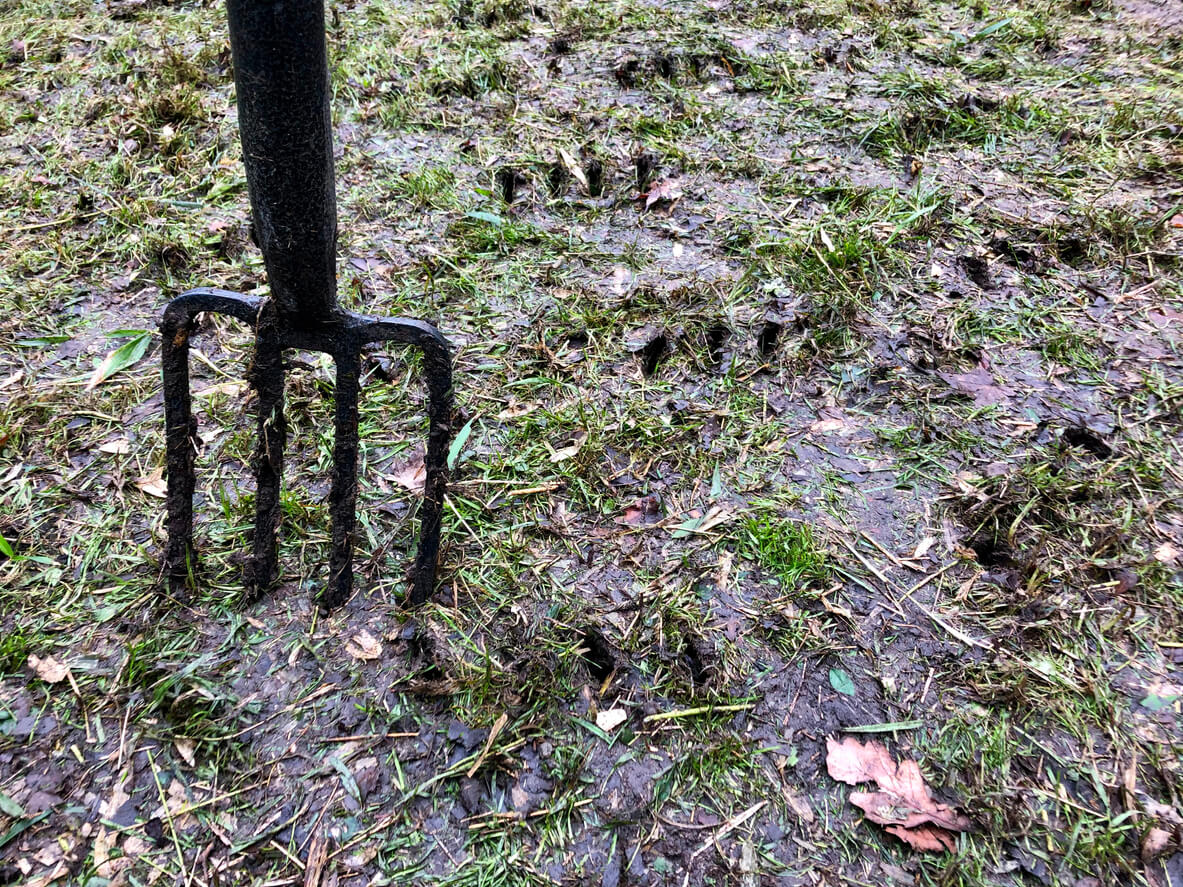
Over time, the soil in your garden can become compacted and dense. As we walk through the garden or move heavy equipment over it, the pressure pushes all that soil closer and closer together. And as you may know, garden aeration is necessary to loosen that soil.
Looser soil makes it easier for roots to grow and get oxygen. Root crops like carrots or beets can develop more fully if they aren’t trying to push through compacted soil. And you need aerated soil if you want that ever-popular “moist, well-drained soil” so many plants love.
It’s not just for those who have in-ground gardens that get a lot of foot traffic, either. Some soils, like those with high volumes of clay, may naturally be this way. Earthworms are, of course, some of the best garden aeration tools. Not only do they dig through and loosen the soil, but they also add nutrients in the form of worm castings. However, you can’t really tell earthworms what to do, so sometimes, we have to resort to using more human-centric options.
Discover 7 top tips for growing, harvesting, and enjoying tomatoes from your home garden—when you access the FREE guide The Best Way to Grow Tomatoes, right now!

The 6 garden aeration tools you should know about
First, though! Let’s talk about the two types of garden aeration tools: spike or plug (core) aerators. A spike aerator is a tool with (spoiler alert!) spikes that poke holes in the soil to allow water, air, and nutrients in. Plug aerators have hollow tubes that remove “plugs” of soil. In most cases, these are better for heavily compacted soil.
You have some additional options to consider, as well. There are pull-behind models that require a riding mower or tractor, handheld models, and shoe versions that look like a mix between sandals and cleats. Though not as prevalent, there are also push models that look similar to push mowers. There are advantages and disadvantages to each.
The tow models certainly make the job easier, but they’re only an option if you have a riding mower or tractor. Handheld and push versions are great for small spaces, and they can be less expensive, but they require physical effort, which may be difficult for some gardeners.
Again, though, these are just things to consider. It’s not that one version is better than another. It’s about choosing the one that will work best for you. That said, let’s take a look at some garden aeration tools in more detail.
1. Garden fork. You may already have a garden aeration tool and not even know it! There’s not a heck of a lot of difference between a handheld spike aeration tool and your typical garden fork, to be perfectly honest. And since you may already have one in your shed, this is perhaps the least expensive option. The downside here is the same as with other handheld versions; it’ll take a bit of sweat and muscle to get the job done, but a cold glass of fresh mint tea can be a nice reward for your efforts!
2. Comby 3-tine Cultivator/Heart-Shaped Hoe. Here’s another option that isn’t technically a garden aeration tool. However, if your goal is to poke holes in the soil to loosen things up, why wouldn’t this work? Plus, you get two tools in one with the hoe on the other side of the fork. At just over a foot long and weighing one pound, it’s easy enough to maneuver this hand-forged tool with one hand. Just beware that this is probably only appropriate for a small garden.
3. Fiskars Extendable Rotary Cultivator. Fiskars has an excellent reputation for producing quality garden tools. And with an extendable handle, steel shaft, and aluminum spikes, this garden aeration tool is easy on your back and does the job with minimal effort.
4. Spiked Shoes. Okay, there are about 10 million pairs of these spiked garden aeration shoe add-ons out there, so why this particular pair? Quite simply, the base is metal, so they don’t break the way plastic ones so often do. Plus, the straps are velcro, so you don’t have to deal with buckles. One thing to be aware of here is that it can take some getting used to walking on these things. This is true with any of these spiked shoes, though.
5. Gardzen Plug Aeration. The Gardzen is a handheld tool with shovel-type action, so you can use your foot to push it into the ground. It’s affordable, with prices in the low $20 range, and it’s small enough that you can hang it in the shed with your other gardening tools.
6. Agri-fab tow plug aerator. There are a few things to like about this aerator. To begin with, it’s a plug aerator, which makes it ideal for heavily compacted or clay garden soil. If you need to dig into your soil, you can add up to 140 pounds of weight to its top tray, and at 40 inches wide, you can cover a lot of ground. (There’s also a 48-inch version.) Of course, you need a tractor or riding mower to operate this. It also requires assembly and has a LOT of parts (63 nuts, 57 bolts, 10 aerator knives, etc.). However, it gets rave reviews on its own website, Amazon, Lowe’s, and Tractor Supply.
Do you have a favorite tool for aerating your garden? I’d love to read about it in the comments.
Note: Food Gardening Network contains links to affiliate websites, including Amazon and Rakuten Affiliate Network, and we may receive a commission for any eligible purchases made by you through links on this page. Any reviews are based on honest reviews of the products.
Discover 7 top tips for growing, harvesting, and enjoying tomatoes from your home garden—when you access the FREE guide The Best Way to Grow Tomatoes, right now!





My personal preference is a broadfork
I’m really looking forward to getting better results in my garden with the help of this site for gardening ????????!!